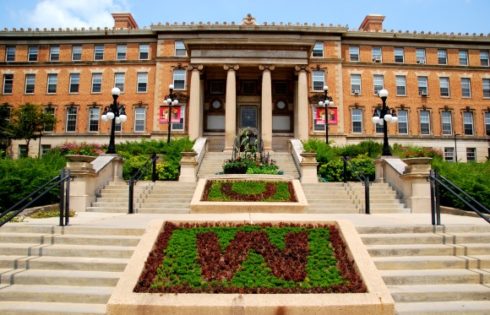
Emboldened by a ‘gutless’ state supreme court
Voters in deep-blue Washington state, whose African-American population is smaller than Arizona’s, have long sought alternatives to a public education system with a mediocre track record – particularly for minority children.
Charter school advocates appeared to have succeeded in April with the passage of the Charter School Act, which responded to a state Supreme Court ruling nearly a year ago that imperiled the few charters authorized by a 2012 voter initiative.
But they couldn’t celebrate for long: Earlier this month, the Washington Education Association filed a lawsuit challenging the Charter School Act.
State and national charter advocates have largely written off the teachers union suit as nothing more than harassment, the fruit of a “flawed, politically motivated agenda,” in the words of the National Alliance for Public Charter Schools.
@seattletimes: Gov. Jay Inslee should — without delay — sign SB 6194, @wacharters school fix https://t.co/wWrjj6vZ5f pic.twitter.com/1TlfkrL0RD
— AWB (@awbolympia) March 11, 2016
But this legal obstacle may prove more difficult to surmount than its predecessors, because of how the Washington constitution classifies public education.
The new suit extends the logic of a Washington Supreme Court in September that invalidated the 2012 voter initiative. In a nutshell, the union argues that the state constitution and related jurisprudence require “uniformity” in the state’s public schools, and that charter schools, with all their desirable flexibility and innovation, violate this requirement.
In other words, precisely what makes charter schools attractive politically —freedom from burdensome regulations and the ability to create unique curricula—could be their undoing in Washington state.
A constitution that favors ‘uniform’ mediocrity over gradual innovation
The new lawsuit builds on the logic from the League of Women Voters ruling, which invalidated the charter-school initiative because I-1240 funded the new schools with money from Washington’s “common school fund.” Article IX, section 2 of the constitution holds that this fund can only be used to finance “common schools.”
Charter schools were held not to be “common” because they lacked elected local school boards, which the Supreme Court called a “hallmark of common schools.”
In this sense, the September ruling was narrow: Charter schools cannot be common schools in the Washington public education system, and thus must be funded some other way.
Prodded by a charter-school advocate blitz, legislators responded by giving charters a different funding source: state lottery money.
Here's the letter from Gov. Inslee on letting charter schools stand via SB 6194. https://t.co/GQztI141zq #waedu More to come @TheLensNews
— TheLensNews (@TheLensNews) April 2, 2016
But in another sense, the decision left unanswered the broader question of whether charter schools can ever be compatible with Article IX of the state constitution.
In addition to explaining the purpose of the common school fund, Article IX, section 2 of the Washington constitution says:
The legislature shall provide for a general and uniform system of public schools. The public school system shall include common schools, and such high schools, normal schools, and technical schools as shall hereafter be established.
The teachers union capitalizes on the “general and uniform” language in the new lawsuit.
It cites judicial precedent construing the “general and uniform” requirement, including the following passage from the 107-year-old state supreme court decision in School District No. 20 v. Bryan: “The system must be uniform in that every child shall have the same advantages and be subject to the same discipline as every other child.”
David and Hong-Nhi, teachers at @RainierPrep, standing up for great public schools and supporting SB 6194. #waleg pic.twitter.com/iJlOdZcWim
— WA Charters (@WA_Charters) February 19, 2016
That’s no accident: The September ruling cited the same language from the Bryan case in a footnote. While the footnote is only dicta – a nonbinding aside – it suggests the high court believes the unique structure of charter schools would violate the uniformity requirement in the state constitution.
“Here, the uniformity of the common school system is similarly broken in that [I-1240] eliminates the local voter control that is a hallmark of common schools, thereby resulting in different (nonuniform) governance for charter schools as compared to common schools,” the footnote reads.
The court, however, declined to address other arguments based on uniformity because it overturned the voter initiative based on its funding source.
Court’s rationale ‘reads like a twisted joke’
This reasoning drew a fiery response at the time from Frederick Hess, director of education policy studies at the American Enterprise Institute.
Writing in National Review, he called the court “gutless” for releasing its opinion the Friday before Labor Day, shortly after the charter schools had opened. He said it diverged from court rulings in every state where the legality of charters has been challenged.
But regarding Article IX, Section 2, and the ancient Bryan decision, Hess said the high court “simply dismissed the relevance of the democratic control exercised through parental choice and charter-school boards.”
District governance is more likely to privilege school-district employees than qualified voters, he argued: “[T]he notion that Washington State’s school districts are sacrosanct because they allow the public to carefully select teachers and discharge incompetent ones reads like a twisted joke.”
Unless the court is persuaded by the Legislature’s reclassification of charters as “public” but not “common,” and funded outside of the state general fund and local levies, among other tweaks, Washington voters may be caught in a tragic, ironic legal bind.
Despite having expressed their desire for charter schools through I-1240 in 2012 and the bipartisan Charter School Act in 2016, they may have run up against a constitutional provision that literally requires uniform mediocrity throughout the state’s public schools.
The only options if the Charter School Act fails would seem to be a constitutional amendment or the targeted defeat of the justices who struck it down; three are on the ballot this November.
Supreme Court Chief Justice Barbara Madsen is leading in the race to keep her seat. https://t.co/JD4KCOznB5 pic.twitter.com/nAzZKMSWX0
— The Seattle Times (@seattletimes) August 3, 2016
Like The College Fix on Facebook / Follow us on Twitter
IMAGE: Shutterstock





Please join the conversation about our stories on Facebook, Twitter, Instagram, Reddit, MeWe, Rumble, Gab, Minds and Gettr.